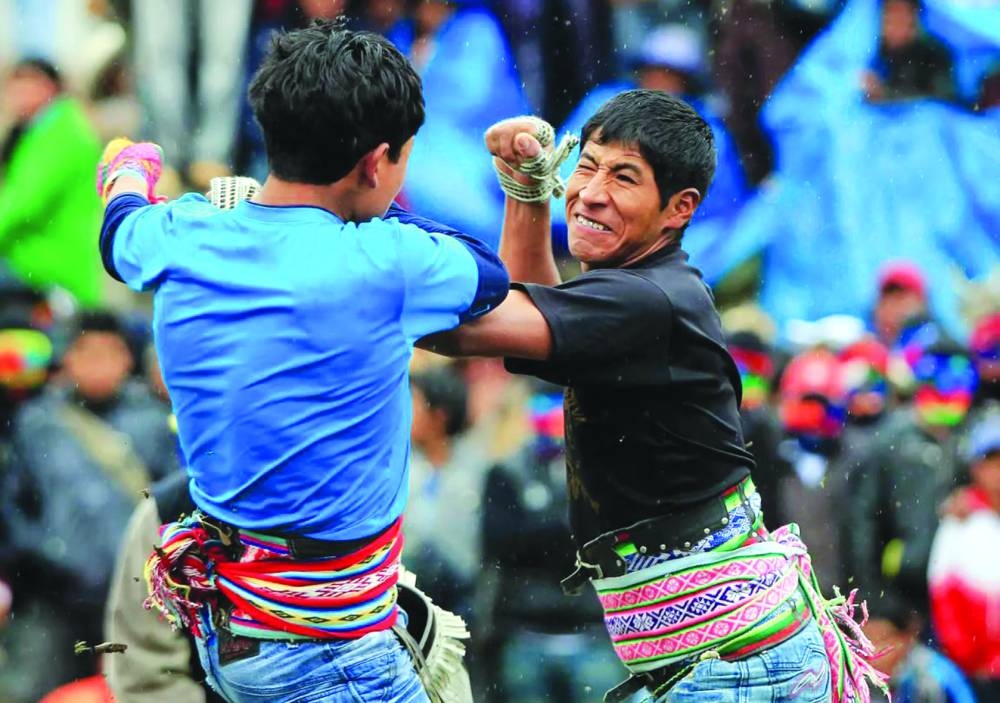The fighting begins and ends with a hug, part of a singular ritual that has residents of the Peruvian Andes punching and kicking in a year-end fight competition known as Takanakuy.
Before the duelling starts in an open-air arena, male fighters remove their elaborate headgear — stuffed birds, foxes or even goat heads worn as symbols of strength or to bring good luck.
Many participants in the holiday tradition come from the town of San Juan de Lurigancho in Chumbivilcas province, part of the Cusco department southeast of Peruvian capital Lima.
The atmosphere is more celebratory than grim. Wearing traditional costumes or leather jackets and boots, men and women join to do the Huaylia, a traditional Andean dance.
The party, however, will end in a fight.
It’s all part of the Takanakuy, a Quechua-language word that means “to hit each other.”
The tradition, which dates to Spanish colonial times, evolved over the centuries to become a means of settling accounts between neighbours in areas where there was no authority.
Before, the fights were “about land disputes, and this was the way to resolve problems between families, between neighbours,” 33-year-old hairdresser and fighter Froilan Rosas told AFP.
Some people fight to defend personal or family honor.
The Takanakuy takes place every December 25 in the Peruvian regions of Cusco, Apurimac, Huancavelica and Arequipa, as well as in the Bolivian Andes. Some regions stage a variation: the women-only Warmi Takanakuy.
The goal is to end the year in peace, residents say.
The party pauses, and the fighting begins.
A fighter challenges another by calling out his or her first and last name. The person challenged is free to refuse, and may offer a substitute.
Before stepping into the ring, male fighters — some shirtless — bind their hands with cloth and swap their shoes for boots.
In this club, duels are brief, lasting no more than a minute, with only punching and kicking allowed. A referee presides over the fight, and four judges decide the winner.
“This is a ritual,” said Julio Boza, a burly 72-year-old and one of the organisers. “It starts with a fight and, after fighting, ends with a hug.” Above all, Boza added, “It is a way to resolve everything that we have had in the year. This is the time to resolve it.”
On this day there were 10 fights before dozens of fans. Anyone, even foreigners, can join in.
One enthusiastic Romanian challenged a local resident. Wearing a Peruvian soccer T-shirt bearing the name of his idol Paolo Guerrero, he won his bout.
Although Takanakuy once was based largely on existing rivalries, today it is more a sport for the young.
“We’re boys, so we want to measure our strength, to know how we’re doing,” said Omar Huachaca, 30, a merchant from Cusco.
“More than anything, the blood in our veins brings us to the party.”

On Christmas Day, hundreds of residents of Chumbivilcas province in Peru take part in an ancient fighting ritual. (Reuters)
